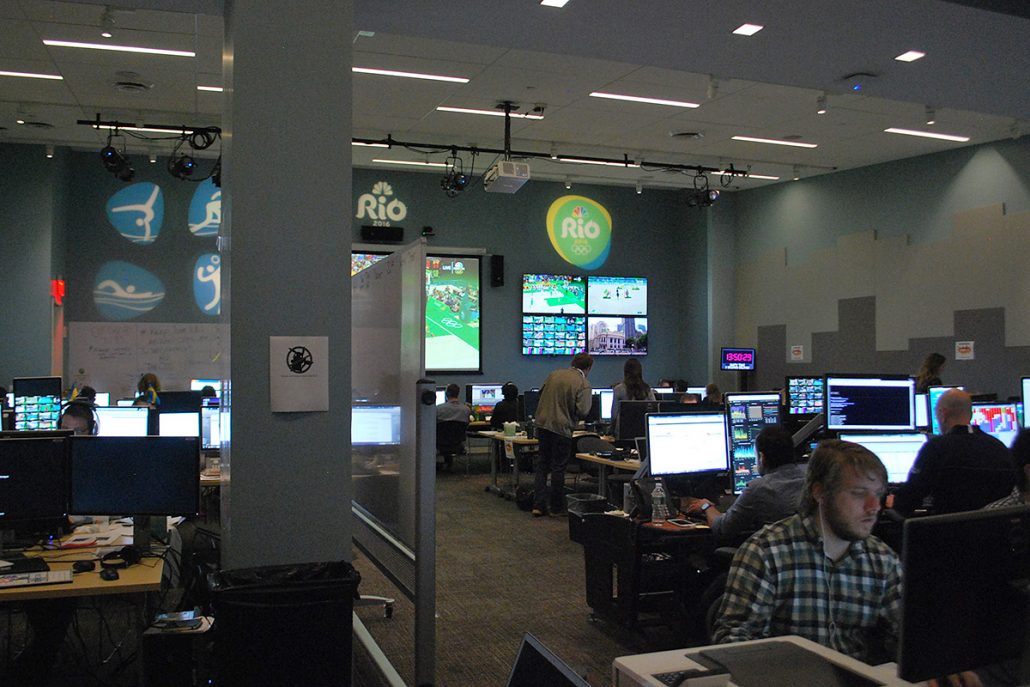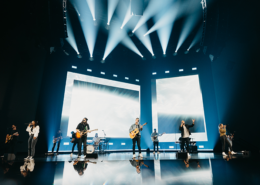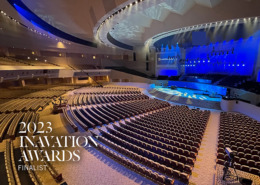How Technology Has Changed the Olympics
By Michael Wright, Senior Vice President, Media & Entertainment
The world of sports is no stranger to the use of technology—from control rooms to replay screens to mobile broadcast trucks, entire stadium and arena infrastructures hinge on successful system implementations. And technology has significantly changed sports’ biggest stage, the Olympic Games. The last few Olympic Games have seen an increase in technology usage extending even beyond broadcast to social media, digital signage, and more. The 2016 Rio Olympics, though, has been the most technologically advanced Games yet—let’s take a look!
An Olympic Legacy
 Our team has a long history of designing and building systems on an Olympic scale. In 1994 we were awarded the contract to build the International Broadcast Center (IBC) and Japan Olympic Consortium (JOC) for the 1996 Olympic Games in Atlanta, Georgia. This was followed by subsequent awards for the IBC in Nagano in 1998 and Sydney in 2000 followed by the JOC in Salt Lake City in 2002. Our trips to Nagano and Sydney also included the design and build of more than 20 live production control rooms.
Our team has a long history of designing and building systems on an Olympic scale. In 1994 we were awarded the contract to build the International Broadcast Center (IBC) and Japan Olympic Consortium (JOC) for the 1996 Olympic Games in Atlanta, Georgia. This was followed by subsequent awards for the IBC in Nagano in 1998 and Sydney in 2000 followed by the JOC in Salt Lake City in 2002. Our trips to Nagano and Sydney also included the design and build of more than 20 live production control rooms.
The NBC Studio Came First
Before we talk in more detail about the technology on site in Rio, we’ll also give a shout out to the fact that our team helped build the US studio complex for NBC Sports that’s responsible for bringing viewers many of these amazing Olympic moments. The focus of the initial project, completed in late 2012, was leveraging technology for collaboration within the workplace to improve efficiencies, allow for greater creativity, and enhanced production capabilities. Our relationship ultimately expanded to working with NBC and Comcast as they grew their sports entertainment footprint, resulting in a multi-billion dollar project award for multiple studios and more than 50 editing rooms and an ongoing project that extends into 2020. To say that makes our team at Diversified even more excited about the Olympics is an understatement!
Fast Forward to Rio—A New Tech-Savvy Stadium (And Beyond)
This year in Rio, while there are technically 32 Olympic venues spread throughout four regions of the city, the primary venue has drawn the most attention. Rio’s Olympic Stadium is a sporting event hotspot hard-wired with $52 million in adaptations unique to the Games. In addition to major modifications to air conditioning, elevators, and bathrooms, the stadium sports a new track and an LED display screen measuring 30 meters long and 9 meters high—the largest ever installed in a stadium. This amazing screen has been showcasing replays and scores from multiple events simultaneously and is seriously pretty awesome.
Central to the success of the Games—or at least to the viewers’ access to footage and results in as close to real time as possible—is a network of cameras synched by optical cables. Routed to what’s been dubbed the Technology Operations Centre (TOC), this “hub” holds an estimated 500 technicians working in shifts to monitor the cloud-based system.
The fact that these core operations are cloud-based is substantial. It’s the first time in Olympic history the Games have relied that heavily on cloud and software-as-a-service (SaaS) technology. The volunteer portal, a website that handles the sign-up and accreditation of the Games’ thousands of volunteers, is critical to the smooth operation of the 17-day event and also a product of the cloud.
Here are some additional ways technology has changed the Olympics this year:
- Second screen applications. Second screen applications are used in conjunction with real-time viewing, allowing anyone—not just members of the press—to get additional data on athletes such as histories, personal records, and more.
- Apps galore. New apps, some created by sponsors, are hosting live broadcasts of individual events across an array of devices.
- Off-site support. While the TOC is in Rio, the new Technical Technology Operations Center (TTOC) is a 150-strong, permanent agency based in Spain that is used as a backup for IT security and other SaaS functions at the games.
- Integrated technology for digital signage. Multiple screens connected to the TOC are regularly broadcasting updates, medal counts, and news quicker than ever before.
- Social media. Social media is naturally playing a huge role in this increasingly digital edition of the Olympic Games, as these platforms allow ways for fans and viewers to engage with one another and even with athletes and announcers themselves.
The Rio Olympics have proven to be exceptionally forward facing in terms of integrating the newest, most cutting-edge technologies like digital signage, cloud and SaaS applications, and live streaming broadcasts into the sports experience. Apps, some even boasting 3D mapping, and second screen applications have served to deepen the experience and make the Rio Olympics memorable for fans, both in person and watching from afar. We are proud to play a role in making the Olympic Games—in Rio and beyond—an amazing viewing experience for all concerned. What about you? Have you been glued to your TV or device, watching your favorite Olympians compete? What’s been your favorite moment so far?







